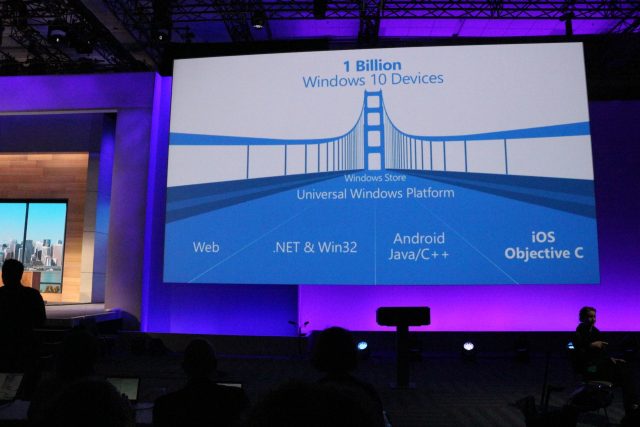 Sean Gallagher
Sean Gallagher At its construct developer convention ultimate 12 months, Microsoft introduced 4 "bridges" designed to support builders carry purposes into the windows save. Three of those are nonetheless round: "Westminster" for porting internet apps, "Centennial" for Win32 apps, and "Islandwood" for iOS apps. however the business demonstrated on Thursday that the fourth bridge, "Astoria," intended to assist deliver Android apps to home windows, is no longer in building.
Early builds of windows 10 cell covered a version of Astoria that largely succeeded in enabling Android apps to be run on home windows telephones. but final November, the Android layer turned into quietly eliminated, with Microsoft announcing that it turned into "no longer capable yet."
Thursday's announcement means that it be under no circumstances going to be capable. The enterprise writes, quite in particular, that deciding on between Astoria and Islandwood "may be puzzling" and that having two systems for porting non-home windows applications became "useless." thus, Islandwood is the most effective bridge, and Astoria is being abandoned.
The business is as a substitute positioning the newly purchased Xamarin as the choicest answer for Android builders. The Xamarin cost proposition is distinct, besides the fact that children. Astoria enabled Android apps written in Java to run on home windows, sometimes without a adjustments in any respect. Xamarin permits developers to share a huge percentage of their code between Android, iOS, windows, and past, nonetheless it requires that all that code need to use .net, and frequently C#.
As for the different bridges, the internet bridge has been transport given that windows 10 changed into publicly released in July 2015. The Centennial bridge for present laptop purposes is being proven with the aid of a small set of developers, with broader expansion deliberate "soon." Islandwood, for iOS, turned into released as open supply in August (together with some contributions from this creator), and construction has persisted considering that then.
On the one hand, this move will most effective assist make sure home windows 10 cellular's persisted minority position. There become a widespread perception that Astoria would go a huge way toward filling the "app hole" that the platform suffers from.
however, it avoids one of the intricate concerns that Astoria raised. to make use of Islandwood, app developers ought to make an active effort to port their application to windows. Islandwood makes this method less demanding than rewriting from scratch, nonetheless it didn't simply allow an iOS software to be run on home windows unmodified. This in turn skill that Islandwood apps are plenty greater likely to be "good citizens" of the platform that integrates with its a number of interesting points.
Astoria, then again, allowed apps to run pretty much unmodified, with little or no developer involvement required. whereas Astoria apps technically might combine with windows 10 platform aspects, this meant that they had been a whole lot less likely to really accomplish that. Astoria also raised some complex legal issues; as part of the Astoria bridge, Microsoft would build its own workalikes for definite Google APIs that aren't a part of the open source Android task. This setup might potentially land Microsoft in the same criminal sizzling water that Google is at the moment in.
more perplexing, given this influence, is the dimensions of the funding Microsoft has reportedly made within the two bridges. Astoria become suggested to be a 60-80 adult mission, compared to round 5 for Islandwood. Astoria delivered home windows kernel modules that supported Linux kernel APIs, which had been curiously capable of natively run many Linux programs. doing away with the mission absolutely could be a disgrace—other than the Android angle, the capacity to deal with windows as a Linux-compatible working equipment can be alluring for move-platform construction and for giving home windows users entry to effortless open supply equipment they often lack.
it be feasible, youngsters, that Microsoft may additionally yet salvage probably the most Astoria work. The newest home windows 10 builds—for the desktop, this time, not mobile—consist of more recent types of the Astoria kernel modules. Tucked away interior the windows 10 Insider Preview is a Linux-like working gadget. The large query is what Microsoft is really going to do with it.
ConversionConversion EmoticonEmoticon